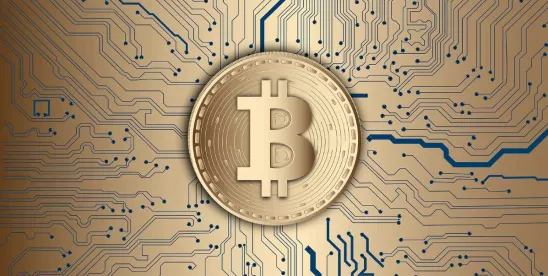The bankruptcy court presiding over the FTX Trading bankruptcy last month issued a memorandum opinion addressing valuation of cryptocurrency-based claims and how to “calculate a reasonable discount to be applied to the Petition Date market price” for certain cryptocurrency tokens. As noted in Bankruptcy Judge John Dorsey’s opinion, “[n]o bankruptcy court has ever estimated the value of cryptocurrency-based claims, nor … has any court ever conducted a valuation of crypto type assets.” The opinion therefore is required reading for parties to cryptocurrency bankruptcy cases as it provides a roadmap for both debtors and non-debtors to use when valuing cryptocurrency claims.
Factual Background
FTX Trading and its affiliates (collectively, the “Debtors”) filed Chapter 11 petitions on November 11, 2022 (the “Petition Date”). Millions of claims were asserted by creditors seeking to recover the value of the cryptocurrency assets held by the Debtors (“Digital Asset Claims”). To streamline the plan and disclosure process and ultimately to make distributions, the Debtors filed a motion seeking to estimate the value of the Digital Asset Claims under section 502(c)(1) of the Bankruptcy Code and submitted to the court a digital asset conversion table that provided a proposed value to be used to convert Digital Asset Claims into dollar-based claims. The court granted the Debtors’ estimation motion for all tokens except for three: MAPS, OXY and SRM (collectively, the “Tokens”). The Tokens were held by the Debtors and three other parties: (a) Maps Vault Limited (“Maps Vault”); (b) TMSI SEZC Ltd. (“TMSI”); and (c) Dondation Serendipity and three affiliates (“Fondation” and with Maps Vault and TMSI, the “Objectors”).
As opposed to transactional tokens, such as Bitcoin, which are used as a payment method, the Tokens at issue are utility tokens. Specifically, MAPS and OXY are designed for use within the Maps.me platform and the Oxygen Protocol, respectively. SRM is a native token of the Serum decentralized exchange and plays multiple roles on the Serum platform. Moreover, as of the Petition Date, the Debtors held almost all of the Tokens. Specifically, the Debtors held over 99% of all MAPS tokens, over 97% of all OXY tokens and over 95% of all SRM tokens. The remainder of the Tokens were held by the Objectors. As a result of the concentration of ownership, the number of Tokens being traded in a given day is unusually low, and the market has a limited ability to absorb sales of the Tokens, meaning that any increase in trading is likely to exert downward pressure on the price (i.e., value) of the Tokens. Furthermore, some of the Tokens were subject to a contractual obligation requiring the Debtors to keep the Tokens “locked” until some date in the future.
Competing Valuation Methodologies
The Debtors and Objectors presented the court with different methodologies by which to value the Tokens as of the Petition Date under section 502(b) of the Bankruptcy Code.
The Debtors’ expert witness Kevin Lu testified regarding the market prices for the Tokens as of the Petition Date (the “Spot Prices”). Professor Sabrina T. Howell (“Professor Howell”) then calculated two different adjustments to be made to the Spot Prices. First, Professor Howell calculated a discount at which the Debtors would have been able to sell their holdings in the Tokens in an orderly liquidation commencing on the Petition Date (the “Asset Liquidation Discount”). Second, Professor Howell calculated a discount to apply to cryptocurrencies that were not marketable as of the Petition Date (the “Discount for Lack of Marketability”). In so doing, Professor Howell utilized a model put forward by Albert Kyle and Anna Obizhaeva in 2016 (the “KO Model”) to calculate the adjustments. Based on their expert witnesses’ testimony, the Debtors argued that the court should apply an Asset Liquidation Discount of 100% for the MAPS and OXY tokens and 58% for SRM, and a Discount for Lack of Marketability between 42%-43% for MAPS, between 37%-40% for OXY and 32% for SRM. Thus, according to the Debtors’ expert witnesses, the MAPS and OXY tokens had a zero value as of the Petition Date and the SRM token was worth less than half of its market value as of the Petition Date.
In contrast, the expert witness retained by Maps Vault and Fondation, Fotios Konstantinidis (“Mr. Konstantinidis”), set the market price for the Tokens as of the Petition Date and then applied the “blockage discount method” (the “Blockage Method”) to determine the appropriate adjustment in value of the Tokens assuming a gradual liquidation. Applying this methodology, Mr. Konstantinidis testified that value of the Tokens should be discounted between 36% and 46%.
Finally, TMSI presented an expert, Ioannis Gkatzimas (“Mr. Gkatzimas”) who used the KO Model but limited his calculations to the value of TMSI’s holdings in the Tokens, without considering the Tokens held by the Debtors. According to Mr. Gkatzimas, the SRM Tokens should be discounted by only approximately 12.4%.
The Court’s Decision
The court began its analysis by rejecting the Objectors’ argument that only the Tokens held by the Objectors should be valued without considering the Tokens held by the Debtors. Such an argument, the court wrote, ignores the “practical impact” of the fact that the Debtors hold almost all of the Tokens and that any sale by the Debtors of the Tokens would have “an immediate effect on the market.” The court therefore found that the limited valuation proposed by the Objectors would result in a “vasty inflated value that would not accurately reflect existing market conditions.”
This left only the question of what discount to apply to the value of the Tokens as of the Petition Date given the fact that the Debtors hold 95% of the supply of the Tokens. To answer this question, the court reviewed the valuation methodologies put forward by the parties. The court rejected the use of the KO Model, finding that the model was not designed to value an asset, but instead was designed to calculate the transaction costs from a decision to take a position in a market of a certain size. The court instead accepted the use of the Blockage Method as the appropriate methodology for valuing the Tokens, finding that it is a generally accepted methodology for determining the value of an asset on a particular date.
Nonetheless, the court held that the Blockage Method had been inappropriately applied by Mr. Konstantinidis. First, the court found that the number of liquidated assets were too low in that Mr. Konstantinidis did not consider how the Debtors’ holdings of the Tokens would impact the value. This omission resulted in an artificially high valuation of the Tokens. Second, the court found that the trading volume utilized by Mr. Konstantinidis was too high, and this also contributed to an artificially high value for the Tokens. Third, the court found that the Blockage Method performed poorly over a long-time horizon such as would be required in this case.
The court instead accepted the application of the Blockage Method put forward by Professor Howell in her rebuttal report in which she changed three of Mr. Konstantinidis’s inputs. First, Professor Howell included both the Tokens held by the Objectors as well as the Tokens held by the Debtors. Second, Professor Howell modified the trading volume growth so that it remained constant at the initial level following the Petition Date. Finally, Professor Howell utilized a model put forward by Stillian Ghaidarov to take into account the likely rising discounts for the Tokens over the long-time horizon.
Based on Professor Howell’s application of the Blockage Model, the court applied a 100% and 99.9% discount for the MAPS and OXY tokens, respectively, and an 18.6% discount for the SRM token. In so holding, the court recognized that its conclusion was seemingly at odds with the fact that the Tokens had a positive trading price on the Petition Date. Nonetheless, the court justified its conclusion by noting that the Debtors held virtually all of the supply of the Tokens on the Petition Date and only allowed a free float (the number of tokens actually available for trading in the marketplace) of less than three (3%) percent of the Token’s maximum supply, and that this had the effect of keeping trading volume low and possibly keeping prices artificially high.
Implications
Claim estimation motions are common in most large bankruptcies based on the realities that some claims will take a long time to liquidate, and a case cannot go on indefinitely. But the complex Token estimation process in the FTX Trading case provides a first look into how to value a cryptocurrency creditor’s claim. Future cryptocurrency estimation litigation will certainly be influenced by Judge Dorsey’s analysis of the competing valuation methodologies and his adoption of the Blockage Model.
Taking a step back from the different methodologies and inputs, the FTX Trading opinion has a shocking conclusion: some cryptocurrencies that supposedly had a positive market value as of the debtor’s petition date could ultimately be worth nothing, which means those creditors will receive $0 for their claim. Although not discussed in depth by the bankruptcy court, FTX Trading’s free float strategy kept the Tokens’ prices artificially high. This of course would not be applicable for liquid, heavily traded cryptocurrencies such as Bitcoin or Ethereum. But for certain cryptocurrency tokens where free float is an issue, courts will likely look behind the curtain to second guess the true value of a cryptocurrency claim and apply significant discounts.





 />i
/>i

